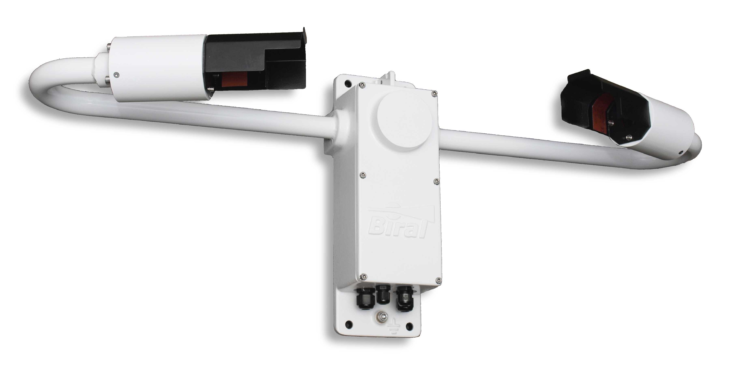THE OGM: 30 YEARS IN BUSINESS Edition - Read Now!
View Past IssuesLeading meteorological specialist Biral, alongside a local aviation warning light manufacturer, has won the first wind turbine project in Canada to incorporate automatic warning light dimming using visibility sensors.
The Mont Sainte-Marguerite (MSM) wind farm in Quebec, has installed technology which has been in use across much of Europe for many years and greatly reduces the environmental impact of light pollution from the warning lights on local residents. The aviation warning lights have to be very bright so that they can be seen by aircraft from several kilometres away. However, in very clear atmospheric conditions (no low cloud, no fog or rain) these lights can have their brightness reduced, down to as little as 10% output, without compromising their effectiveness. Conversely, in foggy or poor visibility conditions, the lights’ brightness can be turned up to the maximum output to ensure that they can be seen.

The Biral visibility sensors are mounted on the top of the turbines and monitor the atmospheric conditions in real-time. They then adjust the lights’ brightness depending upon these atmospheric conditions and thereby reduce any light pollution caused to a minimum.
Biral sensors have been used across Europe for several years in this application and are a standard fit for most of the world’s largest turbine manufacturers.
Biral is the manufacturer of the VPF and SWS Visibility and Present Weather sensors which are used worldwide. The renowned VPF range of visibility and present weather sensors are the most durable on the market, with a proven track record of more than 20 years, and are designed for use in safety-critical applications.
Biral VPF sensors are used to automate visibility and present weather measurements in a wide range of applications, providing improved safety and reduced costs. They are well known for their high durability, reliability and accuracy. A VPF sensor will provide many years of problem-free operation requiring minimal attention and use Forward Scatter Meter (FSM) technology to calculate the Meteorological Optical Range (MOR).
The SWS sensor series was introduced in 2009 and shares much of the advanced technology used in the VPF range. With a powder coated, all-metal enclosure, the sensors are proven to be reliable for extended periods of operation. All SWS series visibility and present weather sensors meet ICAO and WMO requirements for use in national meteorological networks as well as aviation applications such as RVR and AWOS systems.
Did you enjoy this article?
We respect your privacy and will never share your information with third parties.